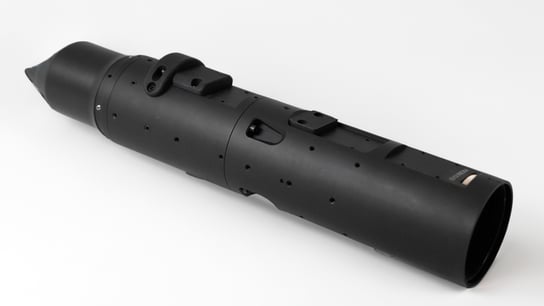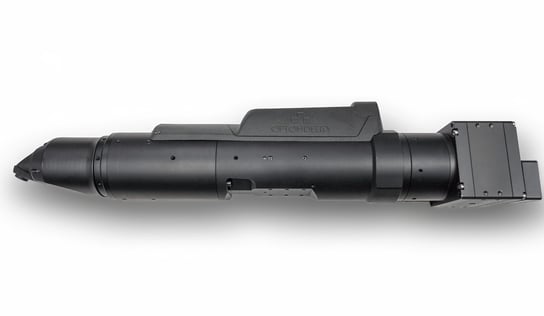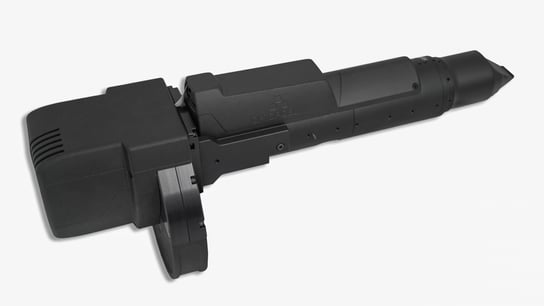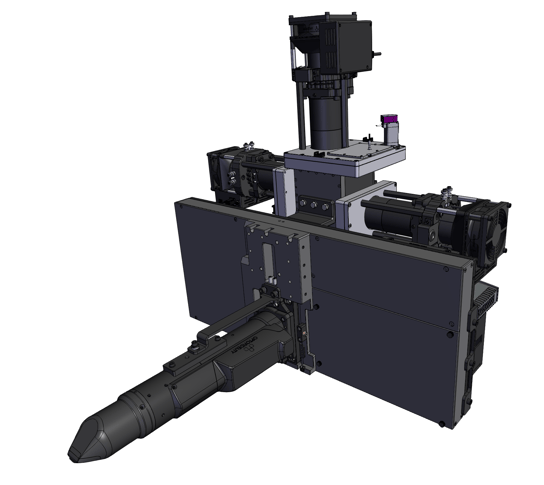
Optical Metrology
Learn more about the optical instruments used in our test systems
Optical Metrology
Explore our optical instruments - OptoEYE, OptoGrayscale, OptoColor, and OptoProjector - each designed for precise near-to-eye display testing and calibration.
Our advanced instruments, combined with our calibration certificates, provide industry-leading accuracy and reliability, ensuring your optical measurements are both precise and traceable.

Key benefits of OptoEYE
- OptoEYE is a sophisticated and highly complex lens, combining an array of advanced features that make it a standout instrument in the market.
- OptoEYE offers unparalleled value by packing a comprehensive set of high-end functions into one compact lens design. OptoEYE wide field of view, virtual entrance pupil with a motorized internal iris, motorized focusing and telecentric optics in a single instrument.
- OptoEYE is available with a straight or folded tip version.

What is OptoEYE?
OptoEYE is a lens designed to mimic the natural functioning of the human eye, including a pupil size comparable to that of a human. This lens comes in two different versions, each tailored for different spatial requirements.
The straight-tip version of OptoEye features a narrow tube with the tip positioned directly at the front of the lens allowing enough space behind the near-to-eye display that is ideal for straightforward usage.
In contrast, the folded-tip version of OptoEye adds a prism, creating a periscope effect that angles the tip. This design is particularly useful in confined spaces, such as when a headband or other obstacles are positioned behind a near-to-eye display. The folded tip version ensures that OptoEYE remains unobtrusive while delivering precise optical performance.
Use Case of OptoEYE
The OptoEYE lens is specifically designed for precise visual image quality measurements in near-to-eye displays. With a design that mirrors the key characteristics of the human eye, its compact form factor ensures effortless positioning within the intended eye box, enabling smooth and accurate measurements of the NED waveguide or the entire system.
How does OptoEYE work?
OptoEYE is a double-imaging telecentric conoscopic lens. Conoscopes, also known as F-Theta lenses, are designed to maintain constant angular magnification. They operate in angular space, mirroring the natural behavior of the human eye, and simplifying the image analysis.
Since the human eye is a scanning system, rotating not just the eyeball but also the head, humans naturally perceive the world in angular terms. OptoEYE is engineered to align with this natural perception, transforming optical angular space into X and Y Cartesian coordinates on the image sensor. This conversion makes it possible for OptoEYE to interpret the incoming visual signal the same way a human eye would.
The telecentric optics of OptoEYE ensure that light is always brought onto the sensor at a perfect normal incidence, regardless of the pixel’s position on the sensor. This uniformity is particularly beneficial when applying filters like OptoColor, which often have their own angular responses. By maintaining a consistent and predictable light path, telecentric optics ensure that filters perform reliably without variations in angular response.
Telecentric optics also minimize the magnification changes due to refocusing the camera . Typically, regular camera lenses experience a slight change in image magnification, or "breathing," when refocusing from close-up to infinity. Designing the lens for telecentric image space eliminates this issue, ensuring that the angular calibration, or the mapping of objects from angular space onto the sensor's Cartesian coordinates, remains constant. This stability in magnification and angular mapping makes OptoEYE ideal for precise imaging applications, where consistency is crucial.
Key Features of OptoEYE
OptoEYE features a virtual entrance pupil, with a working distance of approximately 3.7 mm. The system aperture is a motorized internal iris, an image of which is then projected a few mm in front of the first physical lens surface. This unique mechanical feature allows OptoEYE to be positioned in places where the human eye would naturally be, even if other mechanical components occupy that space during measurement.
The virtual iris is particularly advantageous the lens is used in projector mode, and needs to focus the light into a small input port of a waveguide.
The internal iris is adjustable, enabling simulation of human iris diameters ranging from 1mm to 5mm. OptoEYE is also equipped with a motorized focus with a range of +/- 4 diopters. This flexibility allows OptoEYE to replicate the human eye’s optical behavior, even in challenging or obstructed environments.

What is OptoGrayscale?
OptoGrayscale is an advanced camera system that builds upon the OptoEYE platform by integrating a digital camera head. This system simulates the human eye in the grayscale domain. It has a black and white digital camera module added to the lens. It allows for precise analysis of optical distortion and the ability to assess the Modulation Transfer Function (MTF) of near-to-eye displays. Designed for applications where color is not required, OptoGrayscale offers the same unique features as OptoEYE, making it an essential tool for accurate and reliable optical measurements.
Key benefits of OptoColor
- Precise Color Measurement: OptoColor integrates a set of CIE XYZ filters to deliver highly accurate colorimetric analysis, replicating the human eye's color perception with unmatched precision.
- Versatile System Integration: OptoColor seamlessly combines the OptoEYE lens, a black-and-white camera head, and a filter wheel into one instrument, enabling optical testing in both grayscale and color domains.

What is OptoColor?
OptoColor is an enhanced version of OptoGrayscale, featuring an additional color filter wheel that transforms it into a colorimeter. This system combines the OptoEYE lens with a black-and-white camera head and XYZ color filters, specifically designed to mimic the color response of the human eye. OptoColor measures and analyzes how accurately near-to-eye displays reproduce color, providing insights into their performance and ensuring that the colors seen by the users are true to life.
Key Features of OptoColor
OptoColor combines the OptoEYE lens with advanced color filters and precise calibration. OptoEYE enables focus, correct field of view, and simulation of the human eye's optical behavior. The integrated camera head enhances the system by enabling resolution measurement, distortion analysis, and capturing visual data as the human eye perceives it. The addition of the filter wheel introduces accurate color vision, making OptoColor a comprehensive tool for assessing both the optical and color performance of near-to-eye displays.
Key benefits of OptoProjector
- Accurate Angular Projection: OptoProjector operates in angular space, ensuring that projections are precisely calibrated for angular accuracy, making it ideal for waveguide testing in near-to-eye displays.
- External Virtual Iris: The inclusion of an external virtual iris allows for precise light concentration without physical obstructions, perfect for working with DUTs in confined spaces.
- High Light Power for Enhanced Precision: With its ability to deliver significant wattage into tight spaces, OptoProjector improves the signal-to-noise ratio, enabling more accurate and reliable measurements.

What is OptoProjector?
OptoProjector is the projector version of the OptoEYE. While it uses the same OptoEYE lens, the key difference lies in the direction of light flow, which is reversed. Instead of capturing light, this instrument projects light with a powerful projector unit mounted behind the OptoEYE lens.
How OptoProjector works
OptoProjector takes a back-illuminated reticle and projects it into an image, operating in angular space just like OptoGrayscale and OptoColor.
- Projection in Angular Space: OptoProjector emits light into angular space rather than Cartesian space, ensuring that the projection is calibrated to be straight and accurate in angular coordinates. This is crucial in order to guarantee similar behavior to a human observer.
- External Virtual Iris: A standout feature of the OptoProjector is its use of an external virtual iris. This virtual iris concentrates light into a compact area, which is particularly important when working with DUTs that occupy the physical space where a conventional aperture might otherwise be placed. The virtual iris allows for precise light control without obstructing the DUT, enhancing the accuracy of measurements.
- Waveguide Compatibility: Near-to-eye display waveguides typically use a miniature projector to direct light through an entrance aperture only a few millimeters wide. Thanks to its Virtual Iris, OptoProjector can replicate this process, ensuring accurate project of light into such tight spaces.




